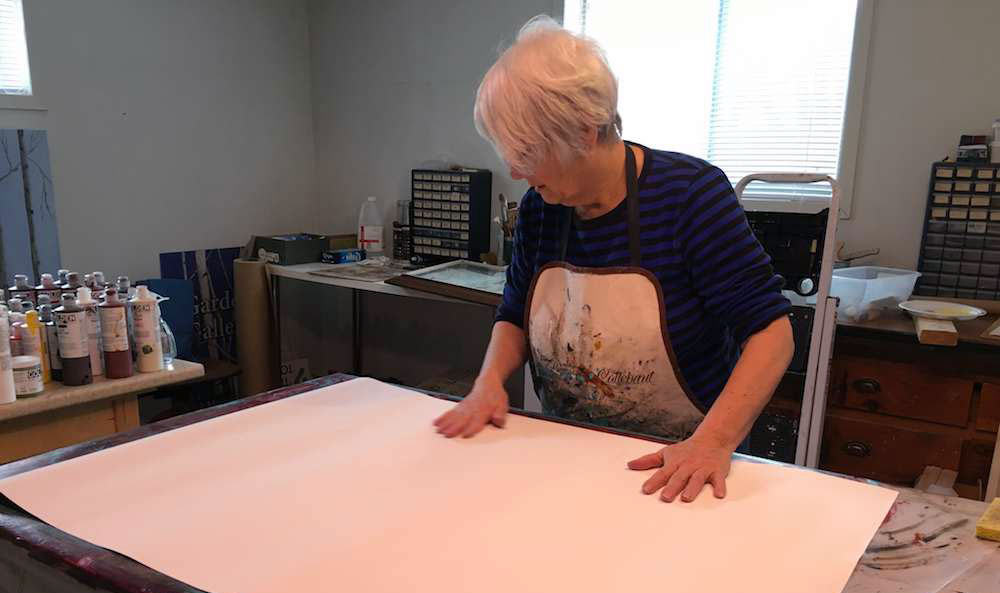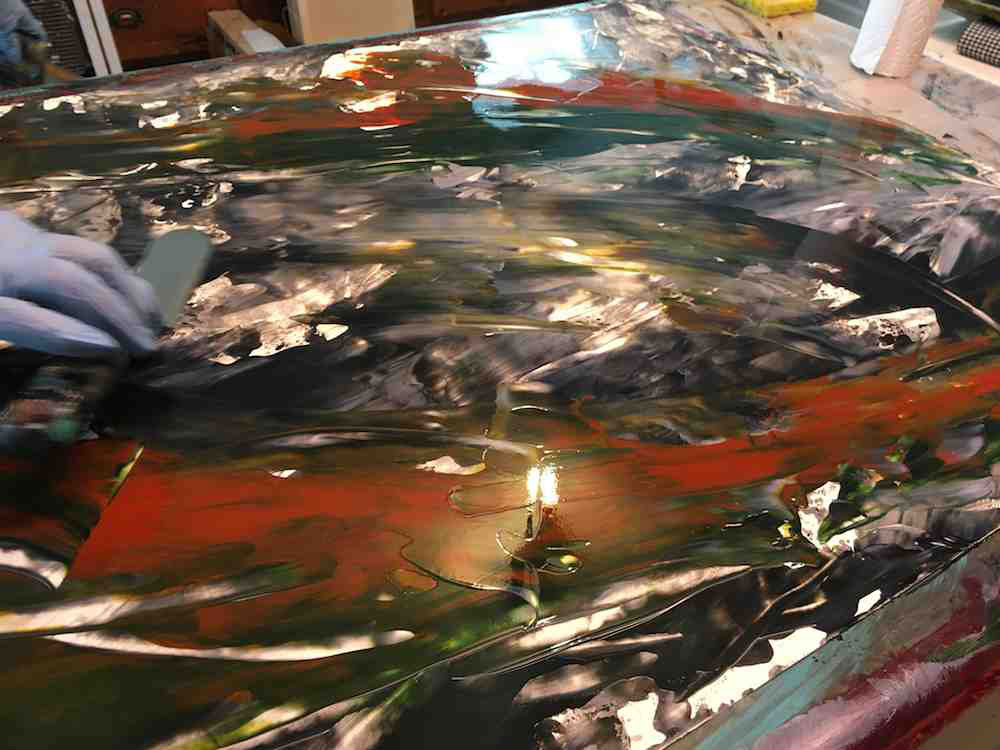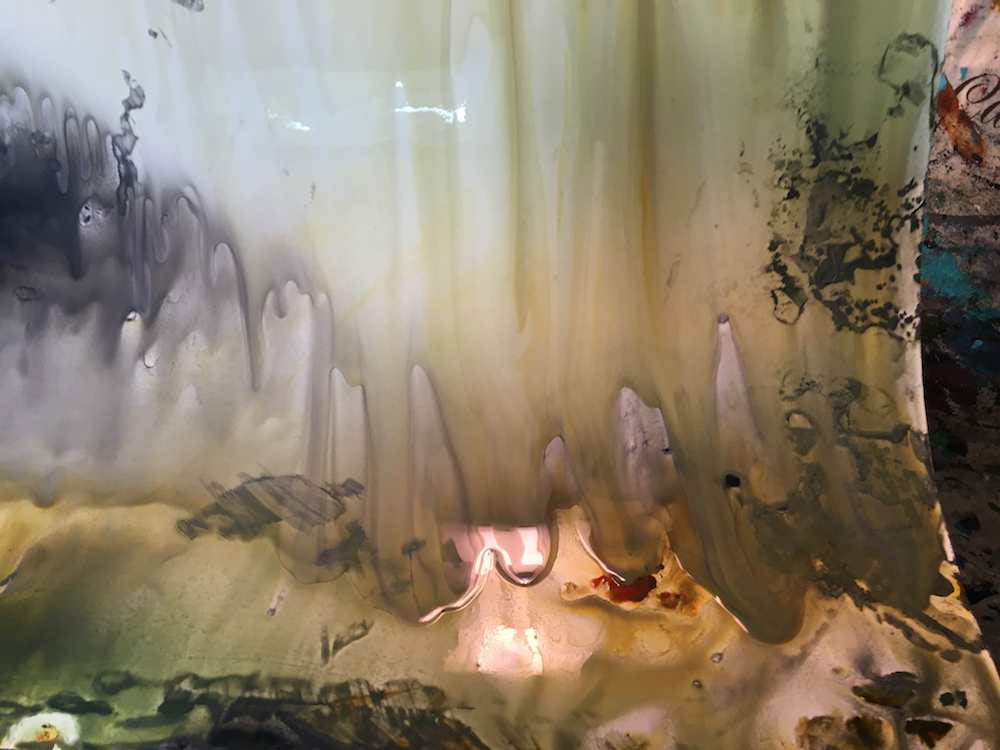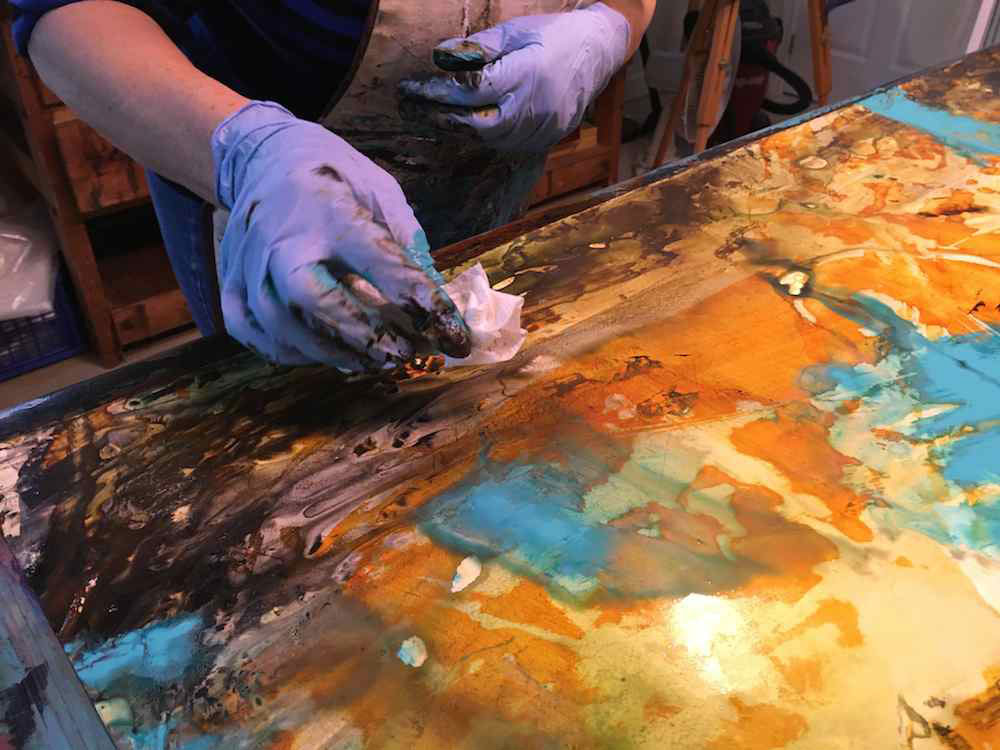My Process
Making Non-objective Art
It is very important to look because unexpected things happen before your eyes.
Making non-objective art is a completely different process from making representational art. When making representational art there is only one way the process can go – towards the figure, the landscape, the subject of the work. The composition is before you, or in your mind’s eye, before you begin. Not so with non-objective art.
What do paintings mean?
Do you ever know what the birds are singing? You don’t.
But you listen to them anyway, so sometimes with art it is important just to look.
Where to begin?
It may seem a silly thing to say, but there’s really no starting point. I lay down paint anywhere on that big white surface and I let it lead me into forming shapes. It’s true to say that at the beginning there really is no objective to non-objective painting!

Under painting – laying the foundations
I want to see the whole picture not just a particular corner, centre or edge. I am looking for a sense of placement. That’s when the painting starts to come to life, take on a life of its own. Things start to emerge, a focus begins to form and a direction on which way my knives are going to go – horizontal, vertical – becomes clear when I am making the under painting.

Layering up – creating depth
The test for me comes in the next stage – layering. I have to decide the thickness of the paint I will apply to the surface and how I will manipulate that layering to get a reaction from the next layer I put on. Sometimes it’s bang on and works out. Sometimes I think ‘Oh, I wasn’t expecting that reaction! But I can work with that.’ and then I’m led into another phase of discovery, of finding what else I can layer up onto that particular reaction. To me it’s all about action and reaction.
Hosing off – revelation
When I use stone paper I wash off some of the layers to reveal the under painting. Stone paper is impervious to moisture and washing off wet paint reveals new colours, new shapes, new forms, on which I can layer up again. Running water becomes another tool for me.

The Magic Trunk
I don’t often feel any sense of disappointment when I paint. As I always say, ‘It’s only paint.’ Nobody has to see it. It’s between me and the paper. It’s a relationship I’m building between me and the layers.

If I get stuck I call it Looking for The Magic Trunk. You know what it’s like when you can’t see the trees because of the forest? You’re frustrated and think, ‘Ah! It’s just not happening.’ I put everything away and come back a few days later and then… ‘Aha! I see it now!’ and I get the encouragement to carry on. And all of a sudden, I can’t quite believe it, ‘Oh! My goodness. Look at this! The wood in the trees. The Magic Trunk!’
After painting non-objective art for a while I begin to anticipate the reaction of colours, one to another, the paint to the canvas or paper. Making non-objective art is full of surprises. It’s never boring.

Over painting – balance
When I am happy with my layering I start to over-paint. This is paint that I won’t wash off and which will bring a sense of drama and focus and attention to the painting.
The Hang
And finally I decide which way I want the piece to hang. I never know while I’m painting. I look and look some more before deciding which way to present the work.
